38 reading food labels cholesterol
How to Read the Nutrition Facts Label on Packaged Foods - WebMD Limit salt to 2,300 milligrams (about 1 teaspoon) daily. If you have high blood pressure, kidney disease, or diabetes, or are African-American or older than 51, your daily limit is lower: 1,500... Reading Cholesterol On Food Labels - Cholesterol Reading Cholesterol On Food Labels. Smoking cigarettes or using various other tobacco products has been received many research studies to elevate LDL cholesterol degrees and decrease HDL cholesterol levels. This is why stopping smoking cigarettes is so crucial. Other factors to cholesterol consist of weight problems, physical lack of exercise ...
Food labels - NHS Some front-of-pack nutrition labels use red, amber and green colour coding. Colour-coded nutritional information tells you at a glance if the food has high, medium or low amounts of fat, saturated fat, sugars and salt: red means high amber means medium green means low In short, the more green on the label, the healthier the choice.

Reading food labels cholesterol
How to read food labels - Heart Foundation NZ The star rating is calculated using an algorithm that takes into consideration a number of positive and negative nutrients for a particular food. The positive elements include protein, fibre, fruit, vegetable, nut, seed and legume content. The negative elements include energy, sodium, saturated fat, and sugar. How-To Guide for Reading Food Labels - The Society for Cardiovascular ... Cholesterol - Cholesterol is listed on the label in milligrams. A low cholesterol food is defined by the Food and Drug Administration as 20 milligrams or less per serving. When reading labels, it may be helpful to remember that cholesterol only comes from animal products. You may also see "0 grams" of cholesterol and at first think a product is ... How to read food labels: MedlinePlus Medical Encyclopedia If a label says that a food has 100 mg of sodium, this means it has about 250 mg of salt. You should eat no more than 2,300 mg of sodium per day. This is the amount of sodium that is in 1 measuring teaspoon of table salt. Ask your health care provider if you should have even less. The % daily value is included on the label as a guide.
Reading food labels cholesterol. How To Read Food and Beverage Labels - National Institute on Aging At the top of the Nutrition Facts label, you will find the total number of servings in the container and the food or beverage's serving size. The serving size on the label is based on the amount of food that people may typically eat at one time and is not a recommendation of how much to eat. Read more about serving and portion sizes. Reading Food Labels - What You Need to Know - Drugs.com This label tells you what a serving size is and how many servings are in the package. Other information shown includes the amount of calories, fat, carbohydrate, protein, vitamins and minerals found in the food. Begin reading food labels at the top, with the serving size and number of servings in the package. How to understand food labels | Eat For Health The Nutrition Information Panel on a food label offers the simplest and easiest way to choose foods with less saturated fat, salt (sodium), added sugars and kilojoules, and more fibre. It can also be used to decide how large one serve of a food group choice or discretionary food would be and whether it's worth the kilojoules. How to Read Food Labels Like a Nutritionist | HUM Nutrition Blog How to Read Food Labels Step 1: Be Wary of Claims Look at food labels like you're reviewing a potential paramour's online-dating profile. In other words, be skeptical of baiting phrases. (Think terms like "cholesterol free" and "natural.")
How to Understand and Use the Nutrition Facts Label | FDA - U.S. Food ... Dietary fiber, vitamin D, calcium, iron ad potassium are nutrients on the label that Americans generally do not get the recommended amount of. They are identified as nutrients to get more of.... How to Tell if Foods Are Low or High Cholesterol - Verywell Health Each food label should include milligrams (mg) of cholesterol per serving. Don't forget to look at the serving size as well. Sometimes products can seem low in cholesterol, but if you eat more than the recommended servings at one sitting, then you can end up consuming a lot more cholesterol than you intended. PDF A Guide to Reading Food Labels - University of Rochester daily value may be lower than what is listed on the label. If you eat more than 2,000 calories a day, your daily value may be higher. Remember, 5% DV or less is low and 20% or more is high. Choose foods with a low % DV for fat, saturated fat, trans fat, cholesterol, or sodium. Understanding the Footnote How To Read Food Labels - 10 Tips | Pritikin Program For Eating Right Polyunsaturated fats (like safflower, soybean, corn, and sesame) and monounsaturated fats (such as olive and canola) are less harmful and would be acceptable, but make sure the percent calories from fat are still in line - 20% calories from fat or less - or your waistline may start getting out of line.
PDF How to Read the Food Label - University of California, Santa Cruz such as meats, poultry, fish, eggs, and dairy. Try to keep your cholesterol intake to less than 300 milligrams (mg) per day. A low-cholesterol food has less than 20 mg per serving. Sodium Too much sodium (salt) may raise your blood pressure. Less than 2,300 mg of sodium each day is recommended. A low-sodium food has 140 mg or less in one serving. Reading Cholesterol Numbers: The Good & Bad Ratio Tofu - ½ a cup contains 0 milligrams of cholesterol. Beef Liver - 3 ½ ounces contain 389 milligrams of cholesterol. Chicken - Skinless, 3 ½ ounces contain 85 milligrams of cholesterol. These are a few examples of items on the food cholesterol chart, and there are many more food items that you would do well to study up on. How to read food labels | healthdirect Saturated fats are linked to an increased risk of heart disease and high blood cholesterol, so it is especially important to choose foods low in saturated fat. Carbohydrate (total): Carbohydrates are found in all fruit and vegetables, all breads and grain products, and sugar and sugary foods. You need carbohydrates for energy. Click to open PDF. Reading Food Labels for Cholesterol. DR. NIRMAL JOSHI MD 1Drop of ... How to read food labels for cholesterol? This video describes how to read food labels specifically related to cholesterol.Please note that I have done my bes...
Easy Guide to Understanding Food Labels When You Have High Cholesterol ... This means that your food may contain trans-fat even if the food label says 0 gram. Therefore it's important to check the ingredient list (more on this later). Cholesterol guidelines currently recommend having not more than 300 milligrams of cholesterol per day, and if you have heart disease, aim for less than 200 milligrams per day. 2.
PDF How do I read food labels? - American Heart Association Label? (continued) • Trans Fat - is also considered a "bad fat" because it can raise your LDL cholesterol and your risk of heart disease. Choose foods with "0" grams of trans fat. Read the ingredient list to avoid foods that contain "partially hydrogenated" oils. Everyone can benefit from limiting trans fat.
How to Read Nutrition Labels - HealthHub Reading food labels or nutrition facts labels correctly is the first step to making sure your kitchen is stocked with healthier food products. ... Some nutritional claims such as 'low cholesterol' or 'no added sugar' may also be misunderstood as a certain food item being cholesterol- or sugar-free.Reading the nutrition labels ...
5 tips for decoding food labels - Harvard Health Look for fat: the good, the bad, and the really bad. Check the saturated fat and trans fat content of the food. For a general healthful diet, keep saturated fat and cholesterol low and avoid trans fats altogether. Look for foods that have 0 grams (g) of trans fat and are lowest in saturated fat and cholesterol.
Reading and Understanding Food Labels and Nutrition Info - Beaumont Health Keep saturated fat to less then 15 grams per day. It is not required to list unsaturated fats (polyunsaturated and monounsaturated) on food labels. In general, unsaturated fats lower cholesterol. The healthiest unsaturated fat is canola oil. Look at the ingredients to see what type of fat was used to make the food.
Reading Food Labels | Saint Luke's Health System This is how to measure 1 serving of the food in the package. If you eat more than 1 serving, you get more of everything on the label — including fat, cholesterol, and calories. Total fat. This tells you how many grams (g) of fat are in 1 serving. Fat is high in calories. A healthy goal is to have less than 25 % of your daily calories come from fat.
How to Read Food Labels : Food Network | Food Network The percent of the Daily Value that is listed on the upper portion of the food label is yet another way to gauge how much saturated fat and cholesterol are in the foods that you buy and eat. If a...
Reading Food Labels | ADA - American Diabetes Association The Nutrition Facts labels on foods are really the key to making the best choices. We'll cover the basics so that these labels make shopping easier for you. You've heard it all. From carb-free to low-carb, to whole and empty carbs, it's hard to know what it all means. Blood sugar highs and lows aren't always easy to understand.
Understanding Food Nutrition Labels | American Heart Association 1 - Start with the serving information at the top. This will tell you the size of a single serving and the total number of servings per container (package). 2 - Next, check total calories per serving and container. Pay attention to the calories per serving and how many calories you're really consuming if you eat the whole package.
How To Read Nutrition Labels - Mayo Clinic Diet Aim for low in saturated fat, trans fat, cholesterol, sodium, and added sugars. High is 20% or more. Aim high in vitamins, minerals and dietary fiber. 4. Check the ingredients Ingredients are listed by volume. The higher up on the list an ingredient is, the more of it the product contains. Make sure sugar isn't one of the first ingredients listed.
Food Labels: Fat & Cholesterol | Home & Garden Information Center The 2015 Dietary Guidelines for Americans recommends the following intakes of fat and cholesterol every day: total fat—20 to 35% of calories, depending on age and gender (65 grams for the 2,000-calorie intake level used in the Daily Value)* saturated fat—less than 10% of calories** trans fat— keep as low as possible
How to read food labels: MedlinePlus Medical Encyclopedia If a label says that a food has 100 mg of sodium, this means it has about 250 mg of salt. You should eat no more than 2,300 mg of sodium per day. This is the amount of sodium that is in 1 measuring teaspoon of table salt. Ask your health care provider if you should have even less. The % daily value is included on the label as a guide.
How-To Guide for Reading Food Labels - The Society for Cardiovascular ... Cholesterol - Cholesterol is listed on the label in milligrams. A low cholesterol food is defined by the Food and Drug Administration as 20 milligrams or less per serving. When reading labels, it may be helpful to remember that cholesterol only comes from animal products. You may also see "0 grams" of cholesterol and at first think a product is ...

Fascinating Cool Tips: Cholesterol Diet Smoothies cholesterol quotes.Cholesterol Lowering Foods ...
How to read food labels - Heart Foundation NZ The star rating is calculated using an algorithm that takes into consideration a number of positive and negative nutrients for a particular food. The positive elements include protein, fibre, fruit, vegetable, nut, seed and legume content. The negative elements include energy, sodium, saturated fat, and sugar.


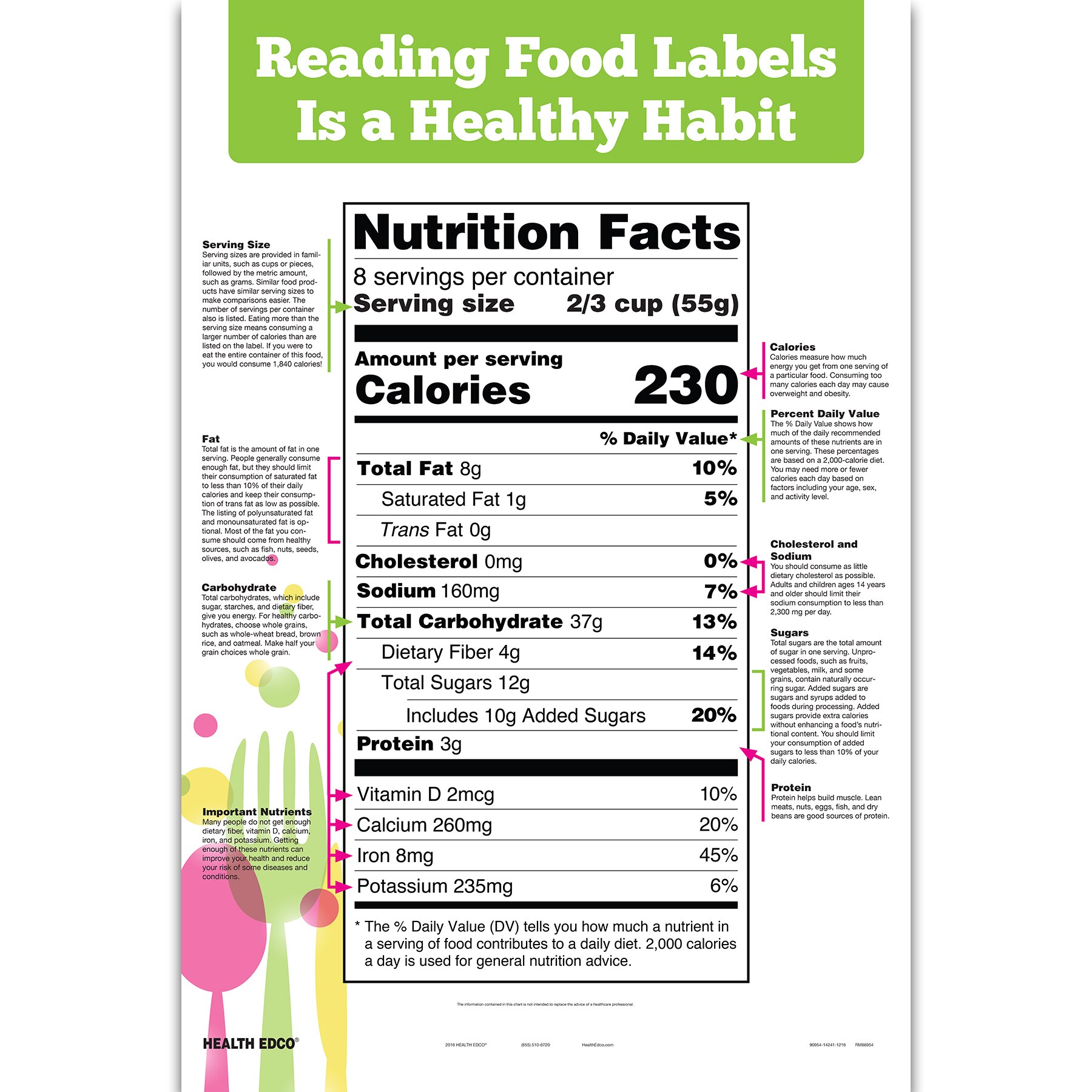

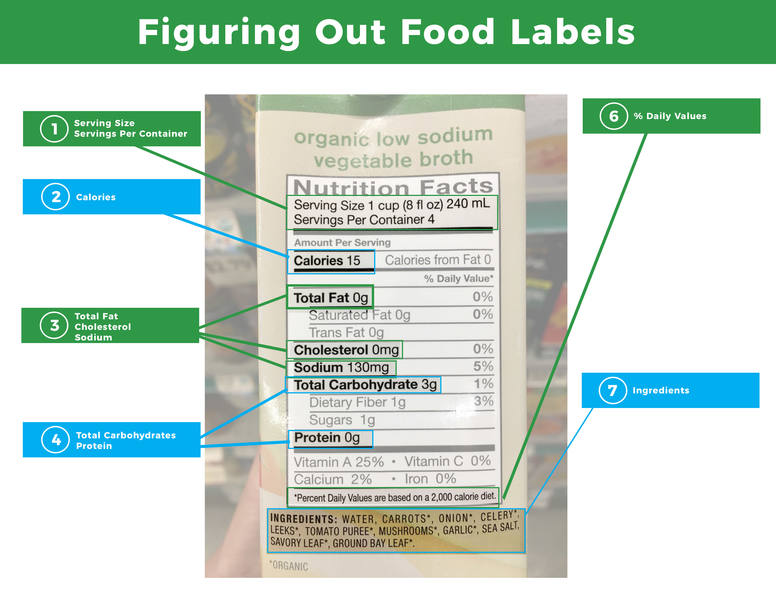

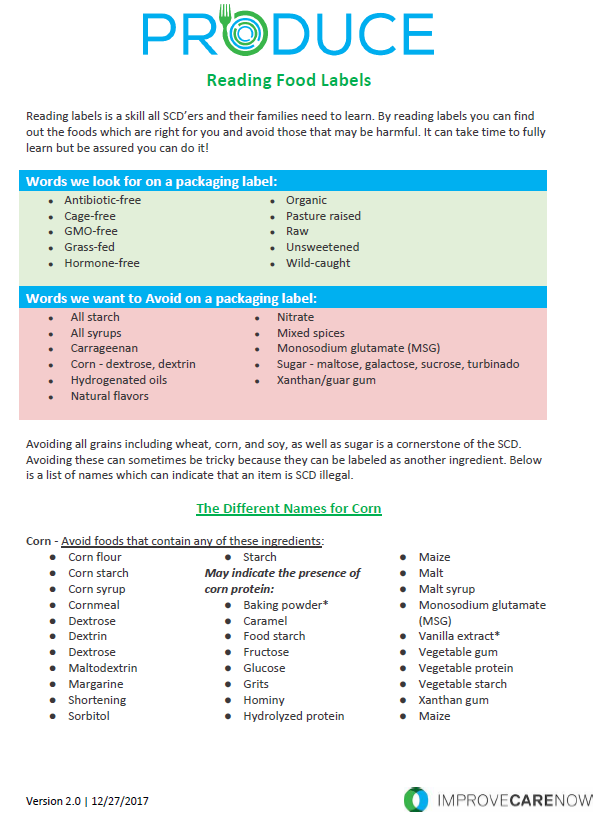
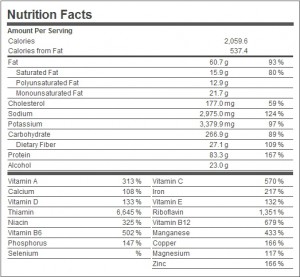
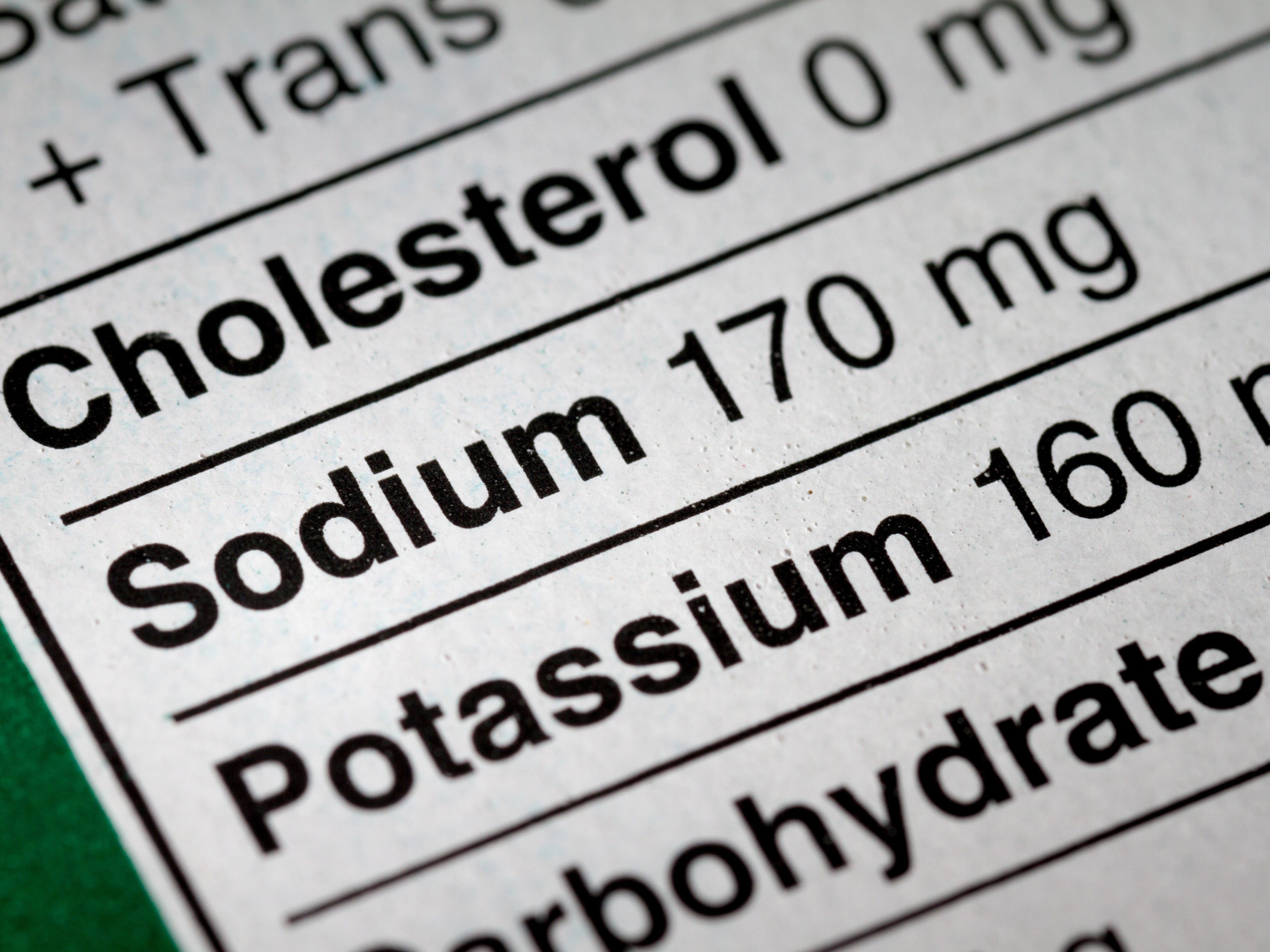
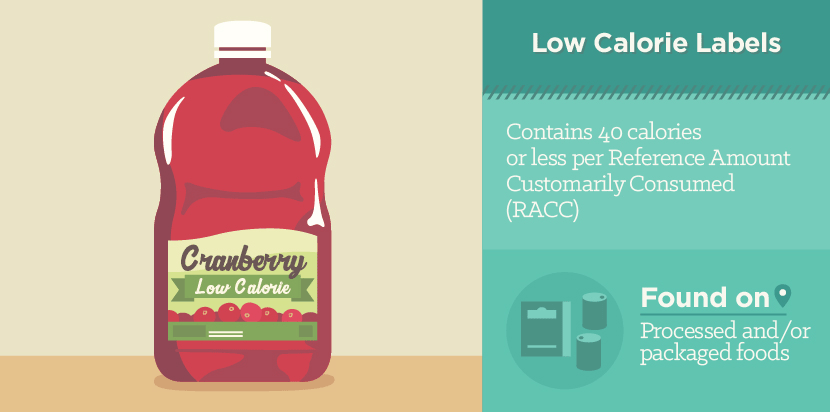


Post a Comment for "38 reading food labels cholesterol"